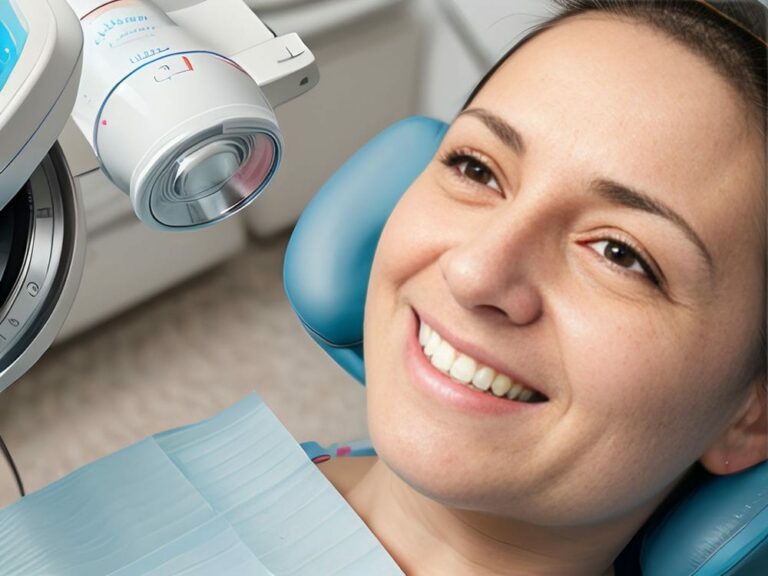Non-invasive approaches to pain management in dentistry: Exploring innovative technologies
Non-invasive approaches to pain management in dentistry have seen significant advancements in recent years, offering patients a more comfortable experience during their dental procedures. These innovative technologies aim to minimize discomfort and anxiety, making visits to the dentist less intimidating. From laser therapy to virtual reality, these non-invasive techniques are revolutionizing the field of dentistry.
One of the most exciting advancements in non-invasive pain management is the use of laser therapy. This technique involves using a low-intensity laser to stimulate the body’s natural healing process and reduce inflammation. Laser therapy can be used for a variety of dental procedures, including gum disease treatment and cavity fillings. Not only does it offer minimal discomfort during and after the procedure, but it also promotes faster healing time compared to traditional methods.
Another advanced technique gaining popularity in dentistry is virtual reality (VR). VR technology allows patients to immerse themselves in a virtual environment, effectively distracting them from any pain or anxiety they may be experiencing during their dental procedure. By wearing a headset and engaging with interactive content, patients can relax and feel more at ease throughout their treatment. This innovative approach not only reduces discomfort but also helps to alleviate dental phobias and anxieties.
For those who experience extreme anxiety or fear when visiting the dentist, sedation dentistry provides a viable solution. Sedation techniques range from mild oral sedatives that help patients relax to intravenous (IV) sedation that induces a sleep-like state throughout the procedure. With sedation dentistry, patients can undergo extensive treatments without feeling any pain or discomfort. This approach has revolutionized the field by allowing individuals with dental phobias or medical conditions that make traditional anesthesia risky to receive essential dental care.
Incorporating these non-invasive approaches into dental practices has transformed the way patients experience pain management during their visits. Whether through laser therapy, virtual reality distraction techniques, or sedation dentistry, these advanced techniques provide minimal discomfort and promote a more comfortable dental experience. As technology continues to advance, the future of non-invasive pain management in dentistry looks promising, offering patients a range of innovative options to make their dental procedures as pain-free as possible.
A comprehensive guide to alternative methods for pain management in dentistry
Non-invasive pain management techniques have revolutionized the field of dentistry, providing patients with a more comfortable and anxiety-free experience during their dental procedures. From laser therapy to virtual reality distraction techniques, these innovative approaches aim to minimize discomfort while promoting faster healing. Additionally, sedation dentistry offers a viable solution for patients with extreme anxiety or fear. Incorporating these non-invasive methods into dental practices has transformed the way patients experience pain management.
One of the most exciting advancements in non-invasive pain management is laser therapy. This technique utilizes low-intensity lasers to stimulate the body’s natural healing process and reduce inflammation. Laser therapy can be used for various dental procedures, including gum disease treatment and cavity fillings. Not only does it offer minimal discomfort during and after the procedure, but it also promotes faster healing compared to traditional methods.
Another innovative approach gaining popularity in dentistry is virtual reality (VR). By immersing themselves in a virtual environment through VR technology, patients can effectively distract themselves from any pain or anxiety they may be experiencing during their dental procedure. This not only reduces discomfort but also helps alleviate dental phobias and anxieties. Wearing a headset and engaging with interactive content allows patients to relax and feel more at ease throughout their treatment.
Sedation dentistry provides a viable solution for individuals who experience extreme anxiety or fear when visiting the dentist. With sedation techniques ranging from mild oral sedatives to intravenous (IV) sedation that induces a sleep-like state, patients can undergo extensive treatments without feeling any pain or discomfort. This approach has revolutionized the field by allowing individuals with dental phobias or medical conditions that make traditional anesthesia risky to receive essential dental care.
Incorporating these non-invasive approaches into dental practices has transformed the way patients experience pain management during their visits. Whether through laser therapy, virtual reality distraction techniques, or sedation dentistry, these advanced techniques provide minimal discomfort and promote a more comfortable dental experience. As technology continues to advance, the future of non-invasive pain management in dentistry looks promising, offering patients a range of innovative options to make their dental procedures as pain-free as possible.
The role of non-invasive techniques in improving oral health and patient comfort
Virtual reality (VR) has emerged as a game-changer in dentistry, not only for pain management but also for improving oral health and patient comfort. By utilizing VR technology, dental professionals can create immersive virtual environments that help patients relax and feel more at ease during their dental procedures. This distraction technique not only reduces anxiety and discomfort but also allows patients to undergo longer and more complex treatments without experiencing excessive stress.
In addition to its pain management benefits, VR has also proven to be a valuable tool in telemedicine. Through virtual consultations, dentists can remotely assess patients’ oral health conditions and provide personalized treatment plans. This eliminates the need for unnecessary physical visits, saving both time and money for patients. Furthermore, telemedicine using VR technology enables dental professionals to reach individuals who may have limited access to dental care due to geographical or mobility constraints.
Another significant advancement in non-invasive techniques is the use of diagnostic tools. With the aid of advanced imaging technologies such as digital X-rays and intraoral cameras, dentists can accurately diagnose oral health issues without invasive procedures. These tools allow for early detection of problems such as cavities, gum disease, or abnormalities in tooth alignment. By identifying these issues at an early stage, dentists can provide prompt treatment interventions, preventing further complications and ensuring better overall oral health outcomes.
The integration of virtual reality distraction techniques and telemedicine with diagnostic tools represents a promising future for non-invasive pain management in dentistry. These advancements not only enhance patient comfort during dental procedures but also improve accessibility to quality dental care. As technology continues to evolve, it is likely that new innovations will emerge, further enhancing the field of non-invasive pain management in dentistry.
Advancements in pain management treatments: What patients need to know
Advancements in pain management treatments have revolutionized the dental industry, greatly improving the patient experience and ensuring better oral health outcomes. One significant area of focus is preventive care, which aims to address oral health issues before they become more severe and painful. Through regular check-ups and cleanings, dentists can identify early signs of problems such as tooth decay or gum disease, allowing for timely interventions and preventing the need for invasive procedures.
In addition to preventive care, pharmacological interventions have also played a crucial role in pain management in dentistry. Local anesthetics are commonly used to numb specific areas during procedures, minimizing discomfort and pain. Furthermore, advancements in anesthesia techniques have made it possible for patients to undergo complex dental treatments without experiencing excessive pain or anxiety.
The patient experience has also been significantly improved through the use of non-pharmacological interventions. Techniques such as relaxation exercises, guided imagery, and music therapy help patients relax and reduce their anxiety during procedures. These non-invasive approaches not only enhance patient comfort but also contribute to a positive overall dental experience.
As technology continues to advance, it is likely that further innovations will emerge in the field of pain management in dentistry. From virtual reality distraction techniques to telemedicine consultations, these advancements will further enhance patient comfort and accessibility to quality dental care. The future holds great promise for non-invasive pain management treatments that prioritize patient well-being while ensuring optimal oral health outcomes.
Emerging technologies for non-invasive pain management in dental procedures
Emerging technologies are revolutionizing non-invasive pain management in dental procedures. One such technology is acupuncture, a traditional Chinese medicine technique that involves the insertion of thin needles into specific points on the body. Acupuncture has been found to be effective in reducing pain and anxiety in dental patients. By stimulating these specific points, acupuncture helps to release endorphins and promote relaxation, providing a natural and drug-free approach to pain management.
Another promising non-invasive pain management technique is hypnosis. Hypnosis involves guiding patients into a state of deep relaxation and heightened suggestibility. Through focused attention and suggestion, hypnosis can help reduce anxiety and increase comfort during dental procedures. This technique has been shown to be particularly effective for patients with dental phobias or high levels of anxiety.
Electrotherapy is another emerging technology that holds promise for non-invasive pain management in dentistry. This technique involves the use of electrical stimulation to relieve pain and promote healing. Electrotherapy works by sending low-level electrical currents through electrodes placed on the skin near the affected area. This stimulates the nerves, promoting blood flow and releasing endorphins, which can help alleviate pain and reduce inflammation.
The future of non-invasive pain management in dentistry looks bright with these emerging technologies. Acupuncture, hypnosis, and electrotherapy offer alternative options for patients who may not want or tolerate traditional pharmacological interventions. These techniques provide natural ways to manage pain and anxiety while promoting patient comfort and overall well-being during dental procedures. With ongoing research and advancements in technology, we can expect even more innovative approaches to non-invasive pain management in the future.
Understanding the benefits of non-invasive pain management for dental patients
Understanding the benefits of non-invasive pain management techniques is crucial for dental patients. These techniques offer alternative options to traditional pharmacological interventions, providing natural ways to manage pain and anxiety during dental procedures. One major benefit is the use of neuromodulation, which involves altering nerve activity through electrical or chemical means. By targeting specific nerves involved in pain transmission, neuromodulation can help reduce or even eliminate pain without the need for medication.
Another significant benefit of non-invasive pain management is the potential for regenerative medicine. This field focuses on stimulating the body’s natural healing processes to repair damaged tissues or organs. In dentistry, regenerative medicine techniques such as platelet-rich plasma therapy and stem cell therapy can be used to promote tissue regeneration and reduce inflammation, leading to improved healing and reduced pain.
Biofeedback is another valuable tool in non-invasive pain management. This technique allows patients to learn how to control certain bodily functions that are normally involuntary, such as heart rate and muscle tension. By using sensors that provide feedback on these functions, patients can learn to consciously regulate them, helping to reduce stress and anxiety during dental procedures.
Non-invasive pain management techniques offer numerous benefits for dental patients. From neuromodulation to regenerative medicine and biofeedback, these approaches provide natural alternatives to traditional medication-based interventions. By reducing or eliminating pain and anxiety, these techniques contribute to overall patient comfort and well-being during dental procedures. With ongoing advancements in research and technology, we can expect even more innovative approaches in the future that further enhance non-invasive pain management in dentistry
Exploring the future of pain management in dentistry: New horizons and possibilities
As we look towards the future of pain management in dentistry, there is a growing focus on holistic approaches that take into account not only the physical aspects of pain but also the psychological factors that contribute to patient discomfort. One exciting development in this area is the integration of psychological interventions alongside non-invasive pain management techniques. By addressing the emotional and mental aspects of dental anxiety and pain, dentists can provide a more comprehensive and personalized approach to patient care.
Holistic approaches to pain management in dentistry recognize that pain is not solely a physical sensation but also influenced by psychological and emotional factors. Dentists are increasingly incorporating techniques such as cognitive-behavioral therapy (CBT) and mindfulness-based stress reduction (MBSR) into their practice. These interventions aim to help patients develop coping mechanisms, reduce anxiety, and manage their pain more effectively.
In addition to psychological interventions, advancements in technology are opening up new horizons for pain management in dentistry. Virtual reality (VR) has shown promise as a non-invasive technique for reducing treatment-related anxiety and pain. By immersing patients in virtual environments, VR can distract them from the dental procedure and create a more positive experience. Similarly, augmented reality (AR) can be used to enhance patient education and engagement, providing a better understanding of dental procedures and reducing fear or discomfort.
The future of pain management in dentistry holds great potential for improving patient comfort and well-being. By embracing holistic approaches that address both physical and psychological aspects of pain, dentists can provide more personalized care. With continued advancements in technology, we can expect even more innovative techniques such as VR and AR to become commonplace in dental practices. Ultimately, these developments will contribute to a more positive dental experience for patients while minimizing discomfort and anxiety associated with dental procedures.
Patient-centered care: How non-invasive techniques are transforming the dental experience
The future of pain management in dentistry is looking increasingly promising, with a focus on holistic approaches that take into account both physical and psychological factors. Dentists are integrating psychological interventions such as cognitive-behavioral therapy (CBT) and mindfulness-based stress reduction (MBSR) into their practice to help patients develop coping mechanisms and manage their pain more effectively. These techniques aim to address the emotional and mental aspects of dental anxiety, providing a more comprehensive and personalized approach to patient care.
Advancements in technology are also revolutionizing pain management in dentistry. Virtual reality (VR) has emerged as a non-invasive technique for reducing treatment-related anxiety and pain. By immersing patients in virtual environments, VR can distract them from the dental procedure and create a more positive experience. Augmented reality (AR) is another exciting development that can enhance patient education and engagement, providing a better understanding of dental procedures and reducing fear or discomfort.
In the future, we can expect even greater advancements in pain management techniques for dentistry. By embracing holistic approaches that address both physical and psychological aspects of pain, dentists will be able to provide more personalized care for their patients. With continued advancements in technology, innovative techniques like VR and AR will likely become commonplace in dental practices, contributing to a more positive dental experience while minimizing discomfort and anxiety associated with dental procedures.
Innovations in non-invasive pain management: Improving outcomes and patient satisfaction
Innovations in non-invasive pain management are constantly being developed to improve outcomes and enhance patient satisfaction in dentistry. These advancements focus on providing effective pain relief without the need for invasive procedures or medications. One such innovation is the use of laser therapy, which involves the application of low-level lasers to stimulate healing and reduce inflammation. This technique has been shown to be highly effective in managing dental pain, with minimal side effects.
Another promising development in non-invasive pain management is the use of regenerative medicine techniques. Stem cell therapy, for example, holds great potential for promoting tissue repair and regeneration, which can help alleviate dental pain caused by conditions such as tooth decay or gum disease. These techniques involve using a patient’s own stem cells or growth factors to promote healing and reduce pain.
Additionally, advancements in dental technology have led to the development of sophisticated imaging systems that allow dentists to accurately diagnose and treat dental conditions with minimal discomfort to the patient. Cone beam computed tomography (CBCT) is one such technology that provides detailed 3D images of the teeth and jaws, enabling dentists to plan treatments more precisely and effectively.
The future of non-invasive pain management in dentistry looks promising, with ongoing research and development aimed at improving outcomes and enhancing patient satisfaction. By embracing these innovative techniques, dentists will be able to provide patients with more personalized care while minimizing discomfort and anxiety associated with dental procedures. With continued advancements in technology and regenerative medicine, we can expect even greater breakthroughs in non-invasive pain management techniques in the years to come.
Integrating non-invasive pain management into routine dental practice: Enhancing patient well-being
The future of non-invasive pain management in dentistry holds great promise for improving patient well-being and enhancing the overall dental experience. With advancements in technology and regenerative medicine, dentists are now able to provide more personalized care while minimizing discomfort and anxiety associated with dental procedures.
One key aspect of integrating non-invasive pain management into routine dental practice is the use of innovative techniques such as laser therapy. By using low-level lasers, dentists can stimulate healing and reduce inflammation, providing effective pain relief without the need for invasive procedures or medications. This not only improves outcomes but also enhances patient satisfaction by minimizing any potential side effects.
Another important aspect is the use of regenerative medicine techniques, such as stem cell therapy. By harnessing the power of a patient’s own stem cells or growth factors, dentists can promote tissue repair and regeneration, addressing the underlying causes of dental pain caused by conditions like tooth decay or gum disease. This approach not only provides long-term relief but also offers a more natural and holistic approach to pain management.
Integrating non-invasive pain management techniques into routine dental practice requires embracing advancements in dental technology as well. Sophisticated imaging systems like cone beam computed tomography (CBCT) allow dentists to accurately diagnose and treat dental conditions with minimal discomfort to the patient. These 3D imaging systems enable dentists to plan treatments more precisely and effectively, further enhancing patient well-being.
By incorporating these innovative techniques into their practice, dentists can improve patient outcomes, enhance satisfaction, and ensure a more comfortable dental experience. With ongoing research and development in this field, we can expect even greater breakthroughs in non-invasive pain management techniques in the years to come. This exciting future holds tremendous potential for transforming the way we manage pain in dentistry and ultimately improving overall patient well-being.
FAQs
Q: What is non-invasive pain management in dentistry?,
A: Non-invasive pain management in dentistry refers to techniques and methods that help alleviate dental pain without the need for surgery or invasive procedures.,
Q: What are some examples of non-invasive pain management techniques?,
A: Some examples of non-invasive pain management techniques in dentistry include the use of local anesthetics, nitrous oxide (laughing gas), and dental laser therapy.,
Q: How does local anesthesia work in dentistry?,
A: Local anesthesia is administered through an injection near the affected area in the mouth, numbing the nerves and preventing pain signals from reaching the brain during dental procedures.,
Q: What is nitrous oxide and how does it help manage pain in dentistry?,
A: Nitrous oxide, also known as laughing gas, is a safe and effective sedative that helps patients relax during dental procedures, reducing anxiety and minimizing pain perception.,
Q: Can dental laser therapy be used for pain management?,
A: Yes, dental laser therapy is a non-invasive technique that can be used for pain management in dentistry. It can be used to treat gum disease, cold sores, and perform various dental surgeries.,
Q: Are non-invasive pain management techniques suitable for all dental procedures?,
A: Non-invasive pain management techniques can be used for a wide range of dental procedures, but their suitability may vary depending on the specific case and the patient’s preferences.,
Q: Are non-invasive pain management techniques safe?,
A: Yes, non-invasive pain management techniques used in dentistry are generally considered safe when administered by trained professionals. However, it is important to discuss any concerns with your dentist before undergoing any procedure.,
Q: Are there any side effects associated with non-invasive pain management techniques?,
A: While non-invasive pain management techniques are generally safe, some patients may experience temporary side effects such as numbness, tingling, or swelling at the injection site. These side effects are usually mild and subside quickly.,
Q: Can non-invasive pain management techniques completely eliminate dental pain?,
A: Non-invasive pain management techniques can significantly reduce or eliminate dental pain during procedures. However, the effectiveness may vary depending on the individual’s pain tolerance and the complexity of the dental procedure.,
Q: How can I determine if non-invasive pain management techniques are right for me?,
A: It is best to consult with your dentist to determine if non-invasive pain management techniques are suitable for your specific dental needs. Your dentist will evaluate your case and recommend the most appropriate pain management options.



















